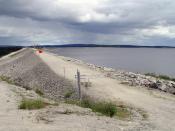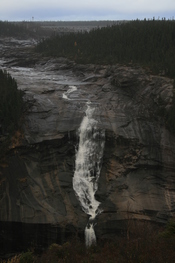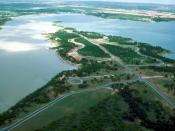Water to many is just an everyday part of life, either from taking that morning shower, boiling pasta, washing the car to walking across a frozen lake in winter. Water is around us all the time and it is very essential to the existence of any microorganism. Water has been praised from different perspectives. From its availability to be inventoried, to its resources to be used, its hazards to be avoided and its assets to be shared with the environment. Although water is much needed, it is sometimes troublesome and even destructive. Severe storms can deposit large amounts of snow, rain, freezing rain or hail to pose water-related hazards. Snow may be an asset for recreation or northern transportation (e.g. winter road operations), but it is also a regular inconvenience to commuters and property management. When snowfall exceeds the amount normally expected, the communities do not have the means to cope and snowstorms become hazardous not only for traveling during the storm but also when that snow melts.
Rainstorms pose more frequent hazards. The deluge of intense and heavy rain may also be accompanied by strong wind, and invariably which induces flash floods and often triggers land slides in steep, unstable terrain. Freezing rain events are less common but they can have calamitous consequences as well. It can clearly be said that water can be neither friend nor foe because it can be so unpredictable. With this uncertainty, it is necessary to have a means of dealing with water when it is in its violent state, as floods can emerge very quickly right under our eyes. As different areas of the world experience different types of flooding, there are different ways in which those governments and agencies deal with floods in their region. Flood management in Canada has similarities and...


